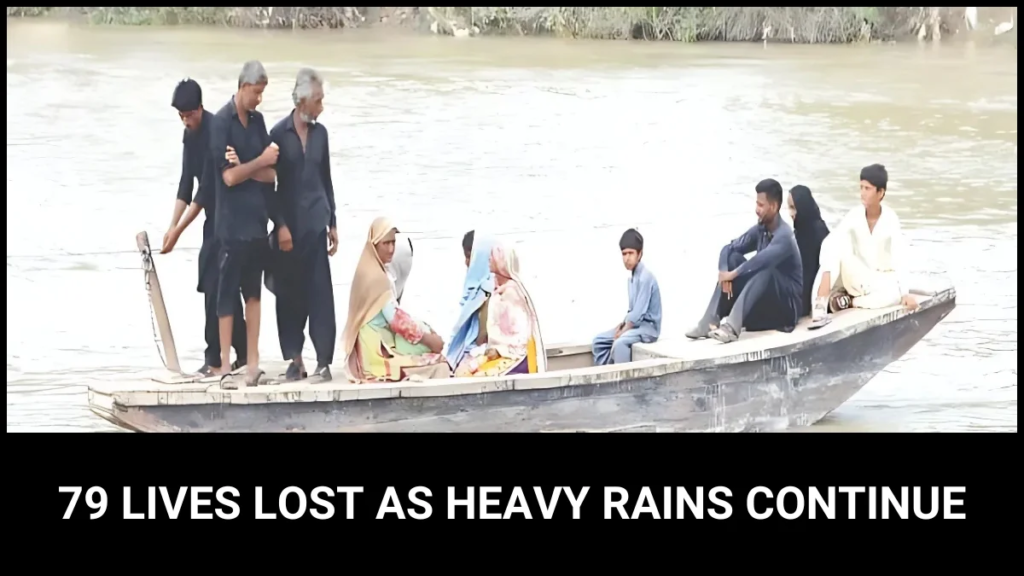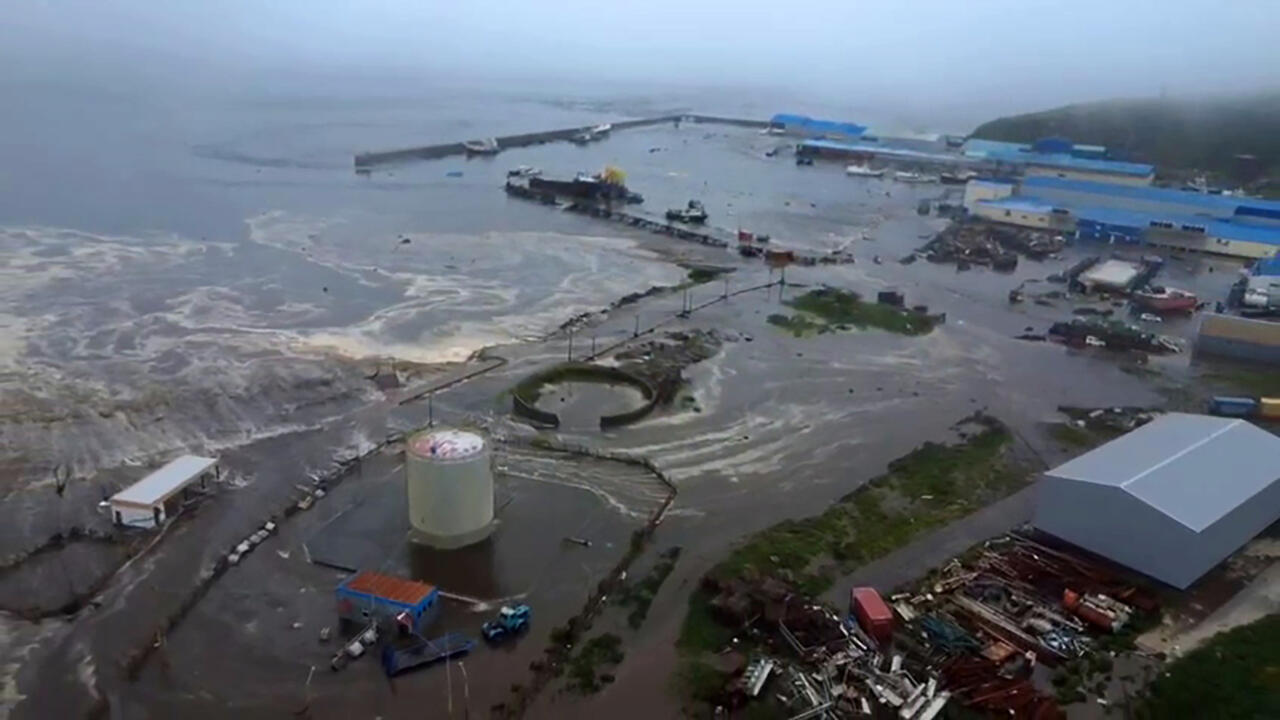
Pakistan Monsoon Floods 2025: 79 Lives Lost as Heavy Rains Continue
- Zain Ul Abideen
- Reading Time 7

Heavy monsoon rains have caused severe flooding across Pakistan, claiming 79 lives since June 26, 2025, according to the National Disaster Management Authority (NDMA). The rains, hitting hardest in Khyber Pakhtunkhwa (KP), Punjab, Sindh, and Balochistan, have triggered flash floods, landslides, and widespread damage. With more heavy rainfall expected until July 10, Pakistan braces for further challenges.
Deadly Monsoon Rains Strike Pakistan
Since June 26, 2025, monsoon rains have battered Pakistan, causing flash floods and landslides that have killed 79 people, including 38 children. The NDMA reports that Khyber Pakhtunkhwa has seen the highest death toll at 29, followed by Punjab with 24, Sindh with 15, and Balochistan with 11. The rains have also injured 140 people, with Punjab reporting 72 injuries, Sindh 34, KP 27, Azad Kashmir 4, and Balochistan 3.
The heavy rainfall, driven by moisture from the Bay of Bengal and Arabian Sea combined with a strong westerly wave, is expected to continue until July 10. This weather pattern increases the risk of both riverine and flash flooding across multiple regions, making the situation critical.
Worst-Hit Regions: Khyber Pakhtunkhwa, Punjab, Sindh, and Balochistan
The monsoon rains have caused significant destruction in several provinces:
- Khyber Pakhtunkhwa (KP): This province has been the hardest hit, with 29 deaths and 94 houses damaged. Flash floods in Swat Valley and other areas like Mansehra, Chitral, and Buner have swept away lives, homes, and livestock. Landslides have blocked roads, including the Karakoram Highway, isolating communities in places like Mohmand and Gadoon Amazai.
- Punjab: With 24 deaths, Punjab has seen house collapses and flooding in cities like Lahore, Rawalpindi, and Faisalabad. The NDMA warns of urban flooding in low-lying areas due to heavy rainfall expected until July 13.
- Sindh: The southern province reported 15 deaths and the loss of 58 livestock. Rural areas with poor drainage systems are particularly vulnerable, and urban flooding is a concern in cities like Karachi and Hyderabad.
- Balochistan: With 11 deaths, Balochistan faces flash floods and landslides in districts like Barkhan, Kohlu, and Khuzdar. The rugged terrain makes rescue efforts challenging.
Monsoon rains and flash floods have left at least 79 people dead and 140 others injured across Pakistan since June 26, says the country's disaster management agency #AsiaAlbum https://t.co/4T2HpWDOcU pic.twitter.com/hGGNp80n6r
— China Xinhua News (@XHNews) July 8, 2025
KPK bears brunt as Pakistan’s most vulnerable to monsoon floodshttps://t.co/Zayc9Mv9qa@AliAminKhanPTI @GovernmentKP @ndmapk pic.twitter.com/yLesA3Lufp
— The_Nation (@The_Nation) July 8, 2025
Province | Deaths | Injuries | Houses Damaged | Livestock Lost |
Khyber Pakhtunkhwa | 29 | 27 | 94 | Not specified |
Punjab | 24 | 72 | Not specified | Not specified |
Sindh | 15 | 34 | Not specified | 58 |
Balochistan | 11 | 3 | Not specified | Not specified |
Azad Kashmir | 0 | 4 | Not specified | Not specified |
Total | 79 | 140 | 189 | 100 |
Climate Change and Pakistan’s Vulnerability
Pakistan is one of the most climate-vulnerable countries in the world, despite contributing less than 1% to global greenhouse gas emissions. The 2022 floods, which killed over 1,700 people and affected 33 million, highlighted the country’s exposure to extreme weather. In 2025, rising temperatures in northern areas like Gilgit-Baltistan have accelerated glacier melt, increasing the risk of glacial lake outburst floods (GLOFs) and landslides. The NDMA has issued alerts for potential GLOFs in KP and Gilgit-Baltistan, urging residents to stay cautious.
The Pakistan Meteorological Department (PMD) warns of heavy rainfall in areas like Murree, Galliyat, and Mansehra, which could trigger flash floods and landslides. This ongoing crisis underscores the need for better infrastructure and disaster preparedness to protect vulnerable communities.
Government Response and Safety Measures
The NDMA and Provincial Disaster Management Authorities (PDMAs) are taking action to manage the crisis. Rescue 1122 teams, civil defense, and ambulances are on high alert, especially in flood-prone areas. The NDMA has rescued 233 people, with 115 in KP, 42 in Sindh, 31 in Punjab, 25 in Gilgit-Baltistan, 15 in Islamabad, and 5 in Balochistan. Authorities are monitoring water levels in rivers like the Indus, Jhelum, Chenab, and Kabul, which are at risk of flooding.
The government advises the public to:
- Stay indoors during thunderstorms.
- Avoid unnecessary travel.
- Keep children away from waterlogged areas and electricity poles.
- Prepare emergency kits with food, water, and medical supplies for 3–5 days.
- Move livestock and valuables to safer locations.
In Haripur’s Baitgali and Nara Amazai union councils, landslides have blocked roads, leaving villages isolated. Local authorities are deploying machinery to clear debris, but residents report delays in rescue efforts. The district administration is conducting emergency operations to monitor streams and prevent further damage.
Impact on Communities and Economy
The floods have devastated local economies, especially in KP’s tourist areas like Swat, Kalam, and Chitral. These regions rely on tourism, but flooded roads, damaged bridges, and destroyed hotels have disrupted livelihoods. In Mohmand district, heavy rains wiped out crops and livestock, while power outages and impassable roads have isolated communities like Kandia Tehsil.
In Hazara Division, rising water levels in rivers like Kunhar and Siren have caused widespread concern. The destruction of agricultural lands and solar infrastructure in South Waziristan has left farmers with significant losses, further straining rural economies.
Weather Forecast and Ongoing Alerts
The PMD forecasts continued rain and thunderstorms across Pakistan on July 9, 2025, with heavy falls expected in:
- Khyber Pakhtunkhwa: Dir, Chitral, Swat, Mansehra, Abbottabad, Haripur, and others.
- Punjab: Lahore, Rawalpindi, Faisalabad, Sialkot, and southern districts like Multan and Dera Ghazi Khan.
- Balochistan: Barkhan, Kohlu, Zhob, and Khuzdar.
- Kashmir and Gilgit-Baltistan: Intermittent rain and potential landslides.
Urban flooding is likely in cities like Islamabad, Lahore, and Peshawar, while landslides may disrupt roads in mountainous areas. The NDMA urges residents to stay updated on weather alerts and take precautions.
The 2025 monsoon floods have brought tragedy to Pakistan, with 79 lives lost and widespread damage to homes, livestock, and infrastructure. As heavy rains continue, the NDMA and local authorities are working to manage the crisis, but challenges like poor infrastructure and climate change vulnerability persist. By staying informed and following safety guidelines, communities can better protect themselves during this difficult time.
The floods are caused by heavy monsoon rains fueled by moisture from the Bay of Bengal and Arabian Sea, combined with a strong westerly wave. Rising temperatures are also accelerating glacier melt, increasing the risk of flash floods and landslides.
Khyber Pakhtunkhwa (KP), Punjab, Sindh, and Balochistan are the most affected. KP has reported the highest deaths (29), followed by Punjab (24), Sindh (15), and Balochistan (11). Areas like Swat, Lahore, and Mohmand are severely impacted.
The NDMA and PDMAs are conducting rescue operations, monitoring river levels, and issuing alerts. Rescue 1122 teams are on high alert, and authorities are advising residents to stay indoors, avoid floodwaters, and prepare emergency kits.
Pakistan is highly vulnerable to climate change, facing extreme weather like heavy rains and glacier melt. The 2025 floods are worsened by rising temperatures, which increase the risk of glacial lake outburst floods (GLOFs) and landslides.
Stay indoors during thunderstorms, avoid waterlogged areas and electricity poles, prepare emergency kits with food and water, and move livestock to safer locations. Follow NDMA and PMD alerts for updates.
Send Us A Message

Punjab Schools Reopen: New Schedule for August 2025 After Reduced Summer Vacation

Earthquake Today: 5.4 Magnitude Quake Jolts Pakistan, 8.8 Hits Russia

Tsunami Waves Hit Pacific Coasts After Massive Russia Earthquake

Mardan Board Result 2025: Punjab Private Schools Shine, Government Schools Improve

